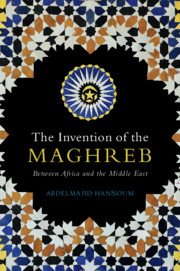Book contents
- The Invention of the Maghreb
- The Invention of the Maghreb
- Copyright page
- Dedication
- Contents
- Maps
- Tables
- Acknowledgments
- Introduction
- 1 Geographic Imagination and Cartographic Power
- 2 The Trace and Its Narratives
- 3 Language, Race, and Territory
- 4 Naming and Historical Narratives
- 5 Strategies for the Present
- 6 Cracks
- Postscript
- Bibliography
- Index
Postscript
Published online by Cambridge University Press: 13 May 2021
- The Invention of the Maghreb
- The Invention of the Maghreb
- Copyright page
- Dedication
- Contents
- Maps
- Tables
- Acknowledgments
- Introduction
- 1 Geographic Imagination and Cartographic Power
- 2 The Trace and Its Narratives
- 3 Language, Race, and Territory
- 4 Naming and Historical Narratives
- 5 Strategies for the Present
- 6 Cracks
- Postscript
- Bibliography
- Index
Summary
In the previous chapters, I have examined how the Maghreb came into being – how it was constructed and defined as a distinct geopolitical and cultural entity separate from Africa and from the Middle East, both of them also colonial inventions created at the same time and in relation to each other. I argued that the Maghreb as a field of discourse is a modern reconfiguration of the region operated by and through modern technologies of power of colonial France. I demonstrated that the construction of the area was a discursive process elaborated gradually, piece by piece, and tentatively, with changes, contradictions, and alterations. This discursive process culminated in the elaboration, by the 1920s, of a conception of the region – taken as the region itself. Despite the fact that part of the region was also at the same time under Italian and Spanish colonial rule, these two powers were at the margin of industrial Europe and therefore were not only inadequately industrialized but also technologically dependent on the rest of Europe, especially France. France had the lion’s share of the region, and the construction of the Maghreb is essentially a French construction. Nevertheless, French colonial creation of the region was reproduced and confirmed, despite alterations and changes, despite contradictions and corrections, by an early generation of local historians and ideologues. Instead of arguing that the Arabic discourse of the Salafi is a discontinuity and that it constitutes a separate discursive formation, I argued that the Salafi discourse on the region is inscribed within the same colonial discursive formation, as a discursive continuity, a counterargument. This conception was further confirmed by and through colonial, inherited, modern technologies of power of the newly founded nation-state in the region.
- Type
- Chapter
- Information
- The Invention of the MaghrebBetween Africa and the Middle East, pp. 275 - 286Publisher: Cambridge University PressPrint publication year: 2021

